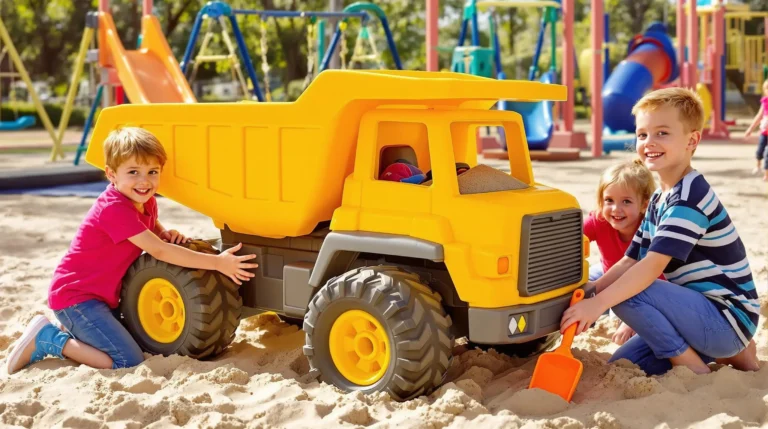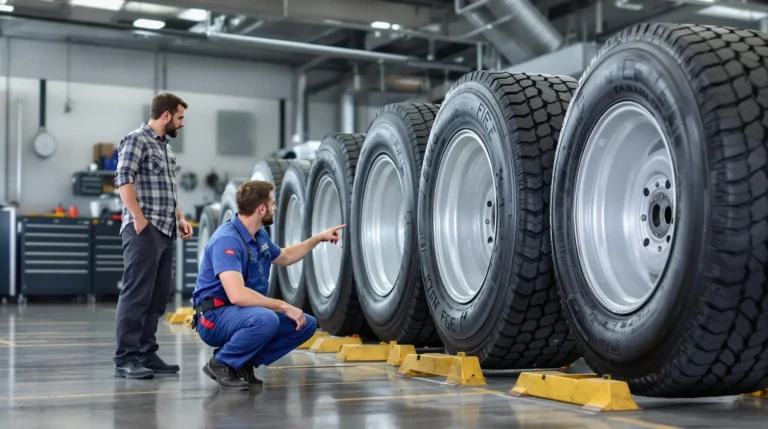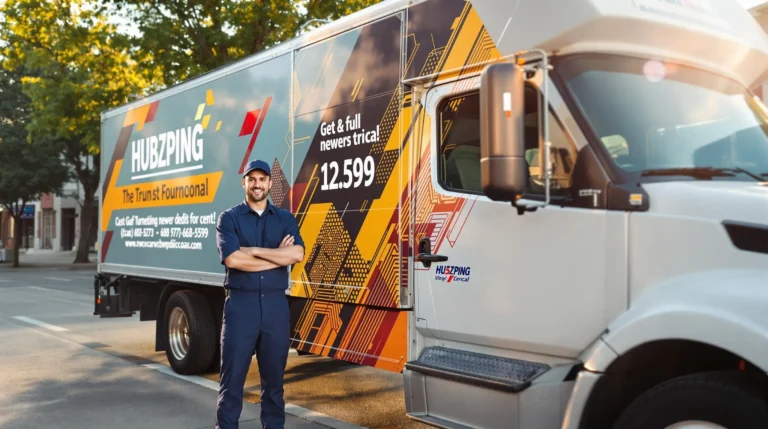Truck Bed Lift: 7 Essential Tips for Ultimate Lifting Success
Ever wrestled with a heavy truck bed, wishing you had an extra set of hands? You’re not alone. For anyone who’s needed to remove or install a truck bed, the struggle is real. That’s where a truck bed lift comes in, transforming a back-breaking job into a manageable task. Let’s dive into the world of these handy tools and explore how they can make your life easier.
While modern trucks like the upcoming 2025 Caterpillar pickup truck are incorporating innovative features, bed removal remains a challenge for most pickup owners.
Why You Need a Pickup Truck Bed Lift: Saving Time and Your Back
Think about the last time you needed to remove your truck bed. Maybe you were doing some rust repair, installing a new fuel pump, or just needed better access to the chassis. Without the right equipment, this job can be a nightmare. It often requires multiple people, specialized tools, and a whole lot of grunting. This is where a pickup truck bed lift shines. These devices are designed to safely and efficiently lift and maneuver your truck bed, often allowing one person to handle the job that used to take a crew. Beyond the sheer convenience, investing in a truck bed removal tool can save you valuable time and, more importantly, protect your back from potential injury. According to recent data, back injuries are a leading cause of missed workdays for tradespeople and DIY enthusiasts alike. Using a truck box lifter is a smart way to mitigate that risk.
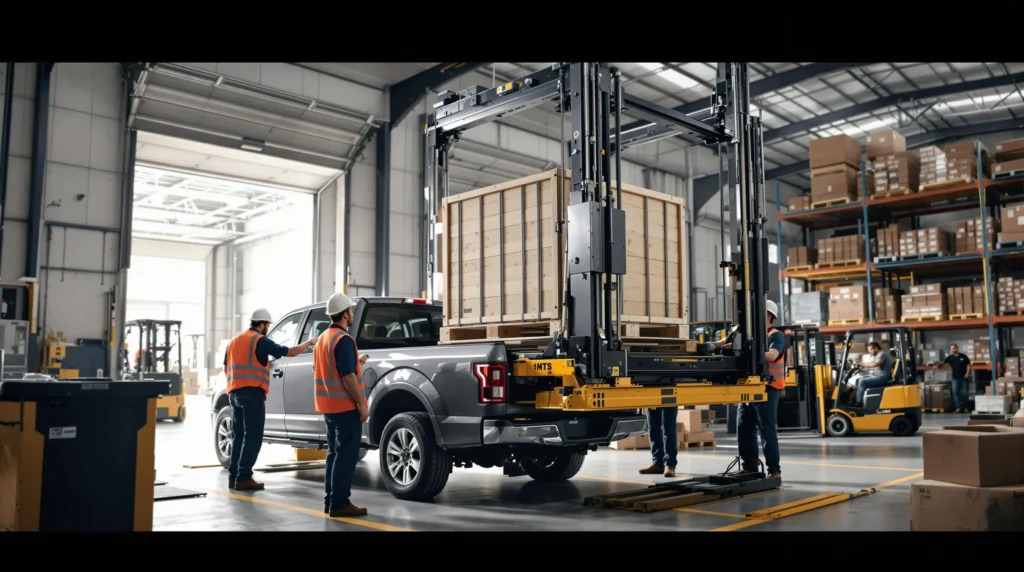
Whether you’re working on a classic restoration (check out our guide on restoring old Ford trucks) or maintaining a modern pickup, having the right lifting equipment is essential.
Exploring Your Options: Different Types of Bed Hoists
The market offers a variety of bed hoist options, each with its own strengths and ideal use cases. Understanding these differences is key to choosing the right tool for your needs.
The Society of Automotive Engineers (SAE) provides comprehensive safety standards for automotive lifting equipment that reputable manufacturers follow.
- Manual Truck Bed Lifts: These are often the most affordable option and rely on mechanical advantage, like levers or winches, to lift the bed. They are generally straightforward to use but may require more physical effort compared to powered models. A truck bed lift tool in this category is a great choice for occasional use or for those who prefer a simpler, less expensive solution.
- Hydraulic Truck Bed Lifts: These lifts utilize hydraulic power to raise and lower the bed. They offer smoother operation and require less manual effort than manual lifts. Many one person truck bed lift systems are hydraulically powered, making solo bed removal and installation a reality. These are a popular choice for both professional mechanics and serious DIYers.
- Electric Truck Bed Lifts: Powered by electricity, these lifts offer the ultimate in convenience. With the push of a button, you can effortlessly raise and lower your truck bed. While typically more expensive, electric lifts are ideal for those who frequently remove their truck bed or who prioritize ease of use. Consider a truck bed removal lift with electric operation if you value speed and minimal physical exertion.
- Specialized Lifting Carts: Some manufacturers offer dedicated carts designed specifically for truck bed removal. These carts often incorporate features like adjustable arms and secure mounting points to ensure the bed is safely supported during lifting and transport. These can be a fantastic option for professional shops that handle truck bed removals regularly.
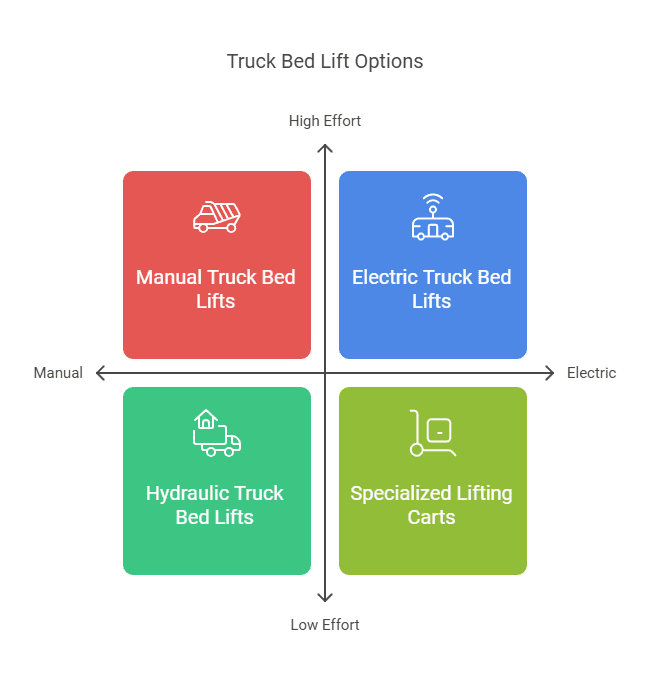
When choosing, consider factors like the weight of your truck bed, the frequency of use, your budget, and the space you have available for storage.
For professional mechanics, the Automotive Lift Institute (ALI)‘s certification standards are crucial when selecting lifting equipment.
Key Features to Look For in a Pick Up Bed Lift
Not all truck bed lifts are created equal. When you’re shopping for a pick up bed lift, keep these important features in mind:
- Weight Capacity: This is arguably the most crucial factor. Ensure the lift you choose has a weight capacity that exceeds the weight of your truck bed. Overloading a lift can be extremely dangerous. Always consult your truck’s owner’s manual for the exact weight of your bed.
- Adjustability: A good lift will offer adjustability in terms of height and width to accommodate different truck bed sizes and configurations. Look for features like adjustable arms or mounting points.
- Stability and Safety: The lift should feel sturdy and stable during operation. Features like wide bases, locking mechanisms, and safety straps are essential for preventing accidents. Read reviews and look for certifications that indicate the lift meets safety standards.
- Ease of Use: Consider how easy the lift is to assemble, operate, and store. Look for intuitive controls and clear instructions. If you plan on using the lift frequently, ease of use will be a significant factor.
- Portability: If you need to move the lift around your garage or shop, consider models with wheels or a compact design for easy storage.
- Durability: A truck bed lift is an investment, so you want one that will last. Look for models constructed from high-quality materials like heavy-duty steel. Check for rust-resistant coatings if you live in an area with high humidity or frequent rain.
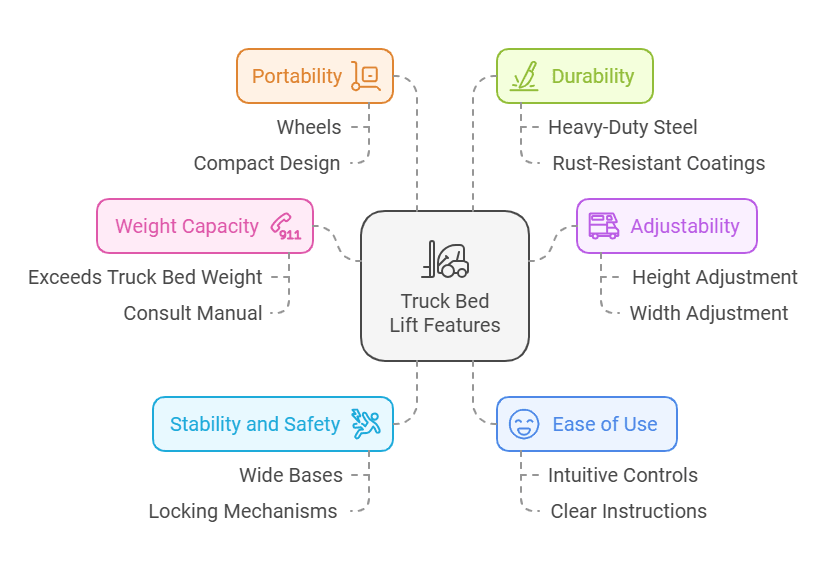
Thinking about these features will help you narrow down your choices and find the best truck bed lift for your specific needs.
Just as choosing your first truck requires careful consideration, selecting the right truck bed lift means evaluating several key features.
Tips for Safe and Efficient Truck Bed Removal
Once you’ve invested in a truck bed lift, it’s crucial to use it safely and effectively. Here are some essential tips:
- Read the Manual: This might seem obvious, but thoroughly reading the manufacturer’s instructions is the most important step. Understand the specific operating procedures and safety precautions for your model.
- Prepare the Area: Ensure you have a level and stable surface to work on. Clear the area of any obstructions and make sure you have enough space to maneuver the lift and the truck bed.
- Disconnect Wiring and Hoses: Before attempting to lift the bed, carefully disconnect any wiring harnesses for taillights, license plate lights, or backup cameras. Also, disconnect any fuel filler neck hoses or other connections between the bed and the chassis.
- Secure the Bed Properly: Follow the manufacturer’s instructions for properly attaching the lift to the truck bed. Ensure all straps, clamps, or mounting points are securely fastened.
- Lift Slowly and Steadily: Avoid jerky movements when lifting or lowering the bed. Operate the lift smoothly and deliberately.
- Use a Spotter (If Possible): While many lifts are designed for one-person operation, having a spotter can add an extra layer of safety, especially during the initial setup and when maneuvering the bed.
- Never Work Under an Unsupported Load: Always ensure the truck bed is fully supported by the lift before working underneath it. Never rely solely on hydraulic or electric power; use safety locks or stands if provided.
- Store the Lift Properly: When not in use, store your truck bed lift in a safe and dry place, following the manufacturer’s recommendations.
By following these safety guidelines, you can confidently and efficiently use your truck bed lift for years to come.
If you’re planning to install a 5th wheel hitch, proper bed removal and reinstallation become even more critical.
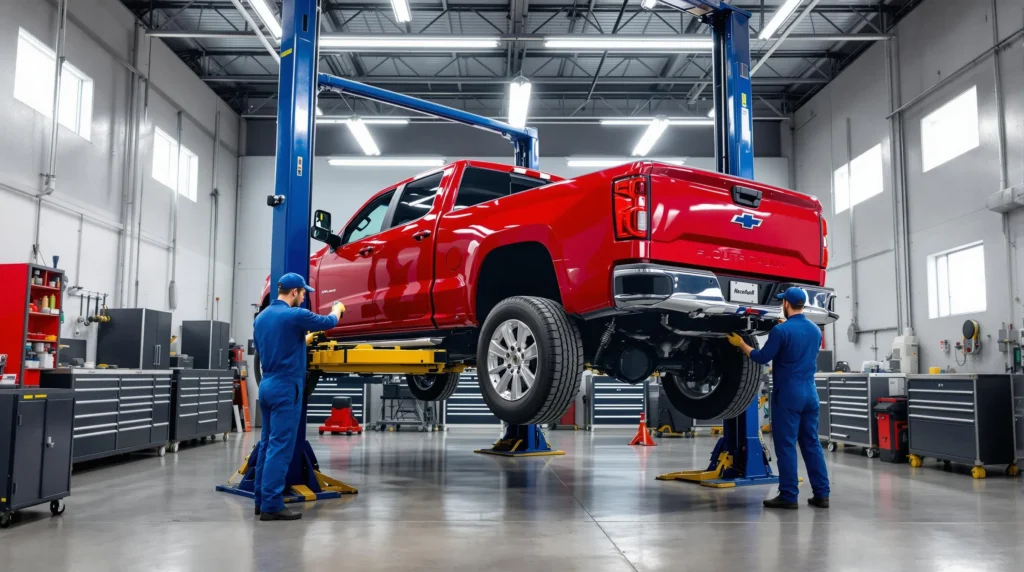
Conclusion: Making Truck Bed Work Easier
Investing in a truck bed lift is a game-changer for anyone who regularly works on their truck. Whether you choose a manual, hydraulic, or electric model, the benefits are clear: reduced physical strain, increased efficiency, and the ability to handle what was once a multi-person job solo. By carefully considering your needs and the features available, you can find the perfect truck bed removal tool to simplify your projects and protect your well-being.
For those interested in other truck modifications, you might want to explore our guide on custom truck exhaust systems to complement your bed removal project.
Let me know if you would like any adjustments or further refinements to this article!
There are no reviews yet. Be the first one to write one.





